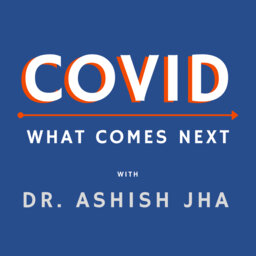Welcome to Episode 19 of “COVID: What comes next,” an exclusive weekly Providence Journal/USA TODAY NETWORK podcast featuring Dr. Ashish Jha, dean of the Brown University School of Public Health and an internationally respected expert on pandemic response and preparedness.
PROVIDENCE – The just-authorized Johnson & Johnson coronavirus vaccine is “great news” for people in the U.S. and abroad, pandemic expert Dr. Ashish Jha declared on Tuesday – but not in that encouraging category, the Brown University School of Public Health dean said, is the recent plateauing of new COVID-19 cases in America.
The Johnson & Johnson product, now part of an inoculation arsenal that includes the Pfizer and Moderna vaccines, has several advantages, Jha said during the weekly taping of the national “COVID: What Comes Next” podcast.
“When you look at the data on J&J, it looks really good across the board,” Jha said. The vaccine has tested well against the South Africa and Brazil variants, the scientist said, and it requires only ordinary refrigeration, not extreme cold, which will be helpful in getting shots into arms of people living in remote areas.
Plus, Jha said, “it's one shot, so you can imagine all the advantages for people who don't want to have to come back for a second shot… It's great for the U.S., it's great for the globe, and we just have to make lots of it so that we can get it out to lots of people.”
Countering the new vaccine news, Jha said, is the fact that in the U.S., “this week, infections have really plateaued at a pretty high level around, 65,000 or 70,000 infections a day. Just to give people perspective, that's as bad as it got during the summer surge.”
Jha asserted: “This is worrisome because variants are still starting to crop up and get more and more common. You do not want to have variants becoming dominant with this level of infection… It's now making me concerned about what the next few weeks, next month or so, may bring.”
The factors at play?
“We don't know for sure,” Jha said. “Certainly I think one is that we saw such precipitous drops and my sense is people may have relaxed things a bit. You hear states starting to open up and saying ‘hey, we're opening up restaurants and bars.’ I think that's a terrible mistake right now. That is not by any stretch what any state should be doing.”
Jha also addressed reactions people have – or don’t have -- to the second dose of the Moderna and Pfizer vaccines, stating that side effects are common, but there is no reason for concern if someone does not experience any symptoms.
“On a personal level, I got my second shot of Moderna last week and I had what I would say is not a significant, not a horrible reaction by any stretch,” Jha said. “My arm was of course sore for a couple of days. I expected that but I was also super-tired for about 24 hours in a way that I'm not usually and I just felt a little bit off. By 24 hours, I was fully back to normal.”
Other people, Jha said, “have much more significant reactions,” but those are “a small minority. And then there are other people who barely feel it at all. The immune system is a very funny thing and we have seen no evidence that if you have a more strong reaction somehow you're better protected than if you have no reaction at all. So it's just about how your immune system reacts to the second dose.”
During taping of the podcast, available exclusively from The Providence Journal and the USA TODAY NETWORK, Jha answered an audience question about vaccines’ efficacy being described as preventing "moderate" symptoms, "severe" symptoms, and sometimes “moderate/severe" together.
“Moderate and severe are even used differently in different clinical trials, so that's a little frustrating,” Jha said before launching into a longer discussion.
Jha also answered a question from someone who wanted his assessment of three metrics that are used in calculating a “return to normality.” They are, the audience member stated, “daily new cases per 100,000”, “rate of transmission” and “percent positive from COVID testing.”
Those are good measures, Jha said, before discussing other metrics and factors as well.
To hear Jha’s full answers to these questions and to learn more about the Johnson & Johnson vaccine, the plateauing of new cases, reactions to second doses and other topics, please listen to the full podcast. New questions for Jha can be sent to gwmiller@providencejournal.com, with “question for Dr. Jha” in the subject field.
This weekly podcast is hosted by G. Wayne Miller, health reporter for The Providence Journal.
 COVID: What comes next - With Dr. Ashish Jha
COVID: What comes next - With Dr. Ashish Jha


